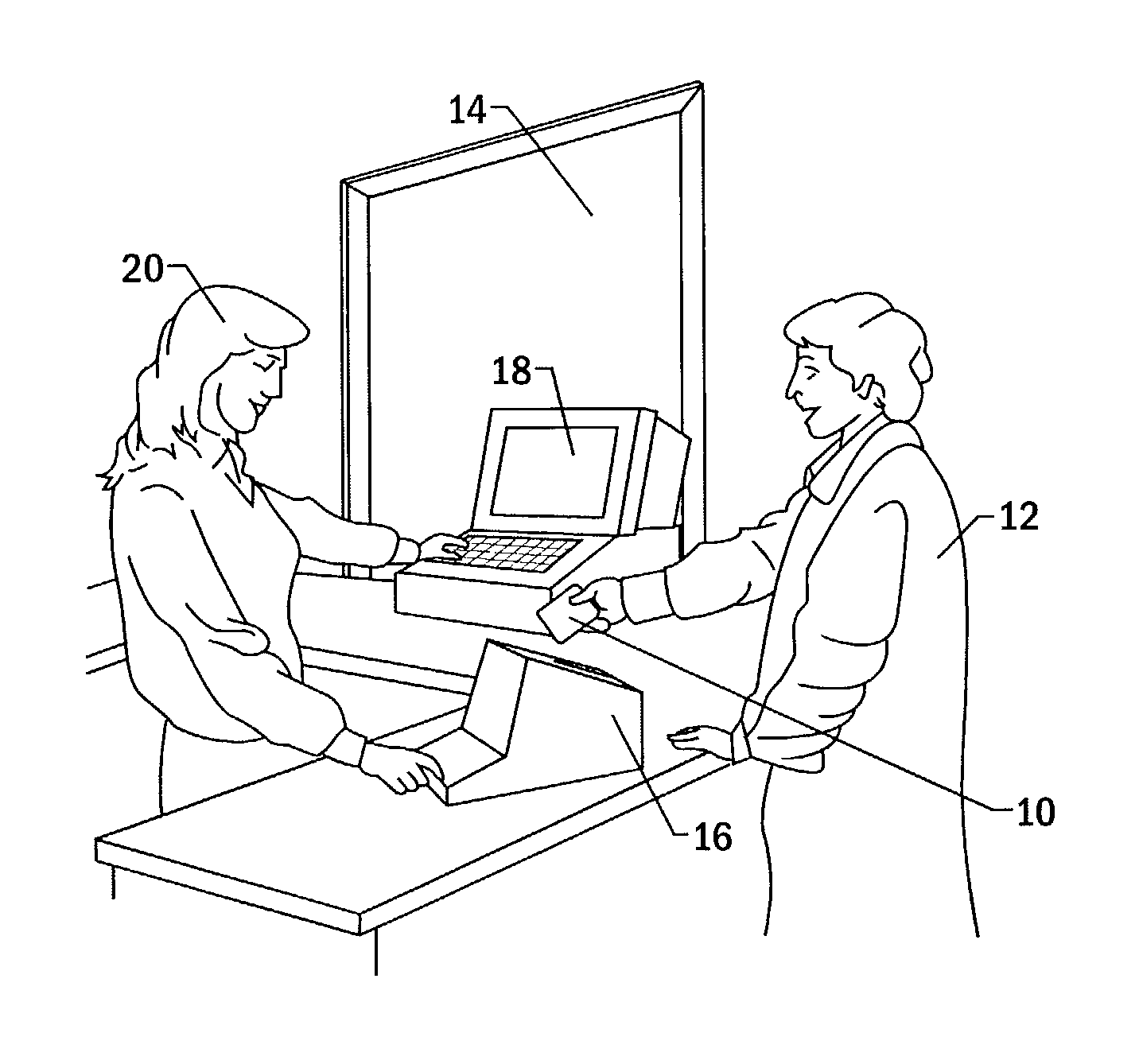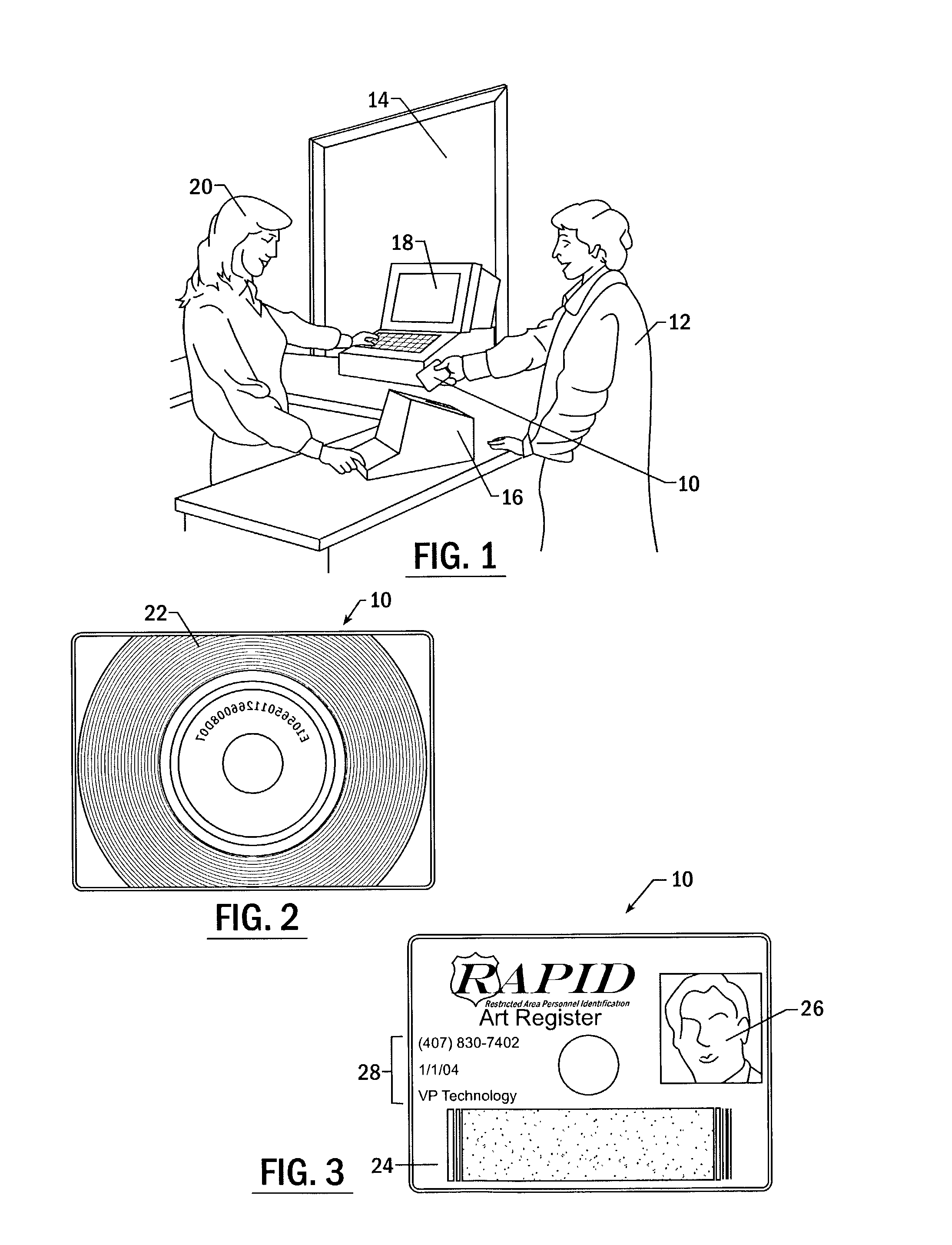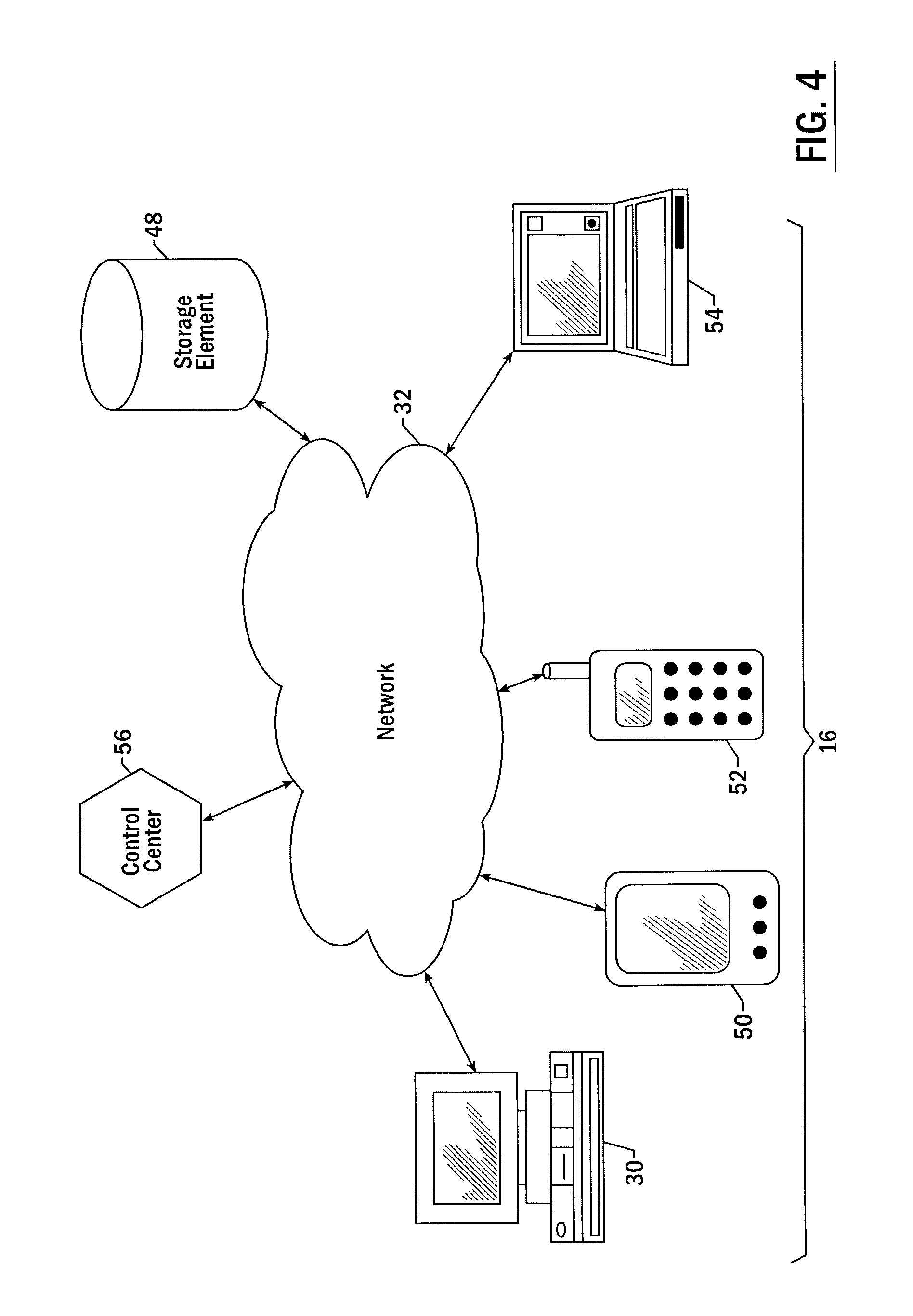Security clearance card, system and method of reading a security clearance card
a security clearance and card reader technology, applied in the field of security systems, can solve problems such as easy compromise, slow access decision-making, and inability to dynamically alter access criteria
- Summary
- Abstract
- Description
- Claims
- Application Information
AI Technical Summary
Benefits of technology
Problems solved by technology
Method used
Image
Examples
application examples
[0119]D. Application Examples
[0120]Certain advantageous embodiments of the identity verification system of the present invention are described below. The potential applications of the identity verification system are wide-ranging, and these specific embodiments are provided for illustration purposes only. For example, the identity verification system may be utilized in seaports, airports, registration of foreign nationals (both students and those in the workforce), in government and private buildings, power plants, water plants, and prisons, just to name a few. In the explanation of these embodiments the descriptions of the identity verification system, including the security clearance cards, of the present invention, which are provided above, are incorporated.
[0121]An embodiment of the identity verification system of the present invention may be utilized in any application in which employees or other individuals must undergo a background check prior to accessing “restricted areas.”...
PUM
| Property | Measurement | Unit |
|---|---|---|
| time | aaaaa | aaaaa |
| flexibility | aaaaa | aaaaa |
| speed | aaaaa | aaaaa |
Abstract
Description
Claims
Application Information
 Login to View More
Login to View More - R&D
- Intellectual Property
- Life Sciences
- Materials
- Tech Scout
- Unparalleled Data Quality
- Higher Quality Content
- 60% Fewer Hallucinations
Browse by: Latest US Patents, China's latest patents, Technical Efficacy Thesaurus, Application Domain, Technology Topic, Popular Technical Reports.
© 2025 PatSnap. All rights reserved.Legal|Privacy policy|Modern Slavery Act Transparency Statement|Sitemap|About US| Contact US: help@patsnap.com



